Searching for the Dutch-Paris Escape Line
Just in case anyone thinks that the life of a researcher is glamorously exciting or satisfyingly contemplative, let me tell you about the day I had.
I started out from my hotel in Brussels at 7:30 am with the idea of photographing some of the places used by Dutch-Paris, known here as the Comité. Back in the Netherlands I had the idea of renting a bike to photograph all of them, but then I saw how people drive here.
The first place was the Café du Tunnel, 55 Boulevard de Waterloo. A woman who found hiding places for at least a hundred Dutch Jews during the war would meet one of the Comité and her latest “clients” here to take them to their hiding place. It’s now a high-end clothing shop.
Nearby at 6, Place Louise, was another café used as a rendez-vous that is now a high-end clothing shop. So much for breakfasting at the scene of clandestine meetings.
So I kept walking to 6 Heldenplein, home of the Comité’s pastor. I can only assume that the neighborhood was in better repair in the 1940’s. At least the name “heroes’ square” remains appropriate.
From there I walked over to Belgian’s Second World War archives and research institute, CEGES/SOMA. I could not have been more warmly welcomed there, but that’s no guarantee of satisfying research. I started out with some German documents that sounded better in the catalog description than they turned out to be, as is all too often the case in any archive. Then I looked at some superbly rich documents which were nevertheless disturbing in that they were essentially the preamble to the death warrants of innocent people. They cast a pall on the day, and they only went up to 1943 whereas I need them for 1944.
So I requested three more dossiers. The woman whose turn it was to fetch documents came to apologize to me in both Dutch and French that she couldn’t get any of them. One had disappeared (no great loss: they’re photocopies of reports in the archives of the foreign ministry). One was in the office of a researcher who wasn’t in today. And the third was a massive collection of an enormous Belgian Resistance network. The archivist in charge of them only began to catalog them a couple of weeks ago. It’s impossible to request files without a catalog number. She offered to go fetch the archivist, but I elected to send him an email on the subject.
I then came across a reference to the trial of Geheime Feldpolizei 530, the German secret police unit that arrested at least two and possibly more members of the Comité. I set off an alarm when I went to ask someone about where to find those records, but Madame, le président du salle, called yet another researcher about it. It turns out that I need to apply to the Ministry of Justice to see the trial records and the Ministry of Social Welfare to see the other reports regarding the prisons.
I need to write the Ministry of Social Welfare anyway to see their files on the 47 members of Dutch-Paris who were arrested by the Germans in Belgium. And I need to apply to the Sureté d’Etat (security services) to see the files they have about a dozen or so members of Dutch-Paris.
By this time it was noon, when the archive closes for an hour, and I’d reached an impasse. I decided to walk over to the Museum and Archives of the Flemish [Dutch-speaking] Community in Brussels. My mistake was to rely on the map. I did indeed find a buzzer labeled with the name of the museum, but the person who answered it spoke French. During the course of our second conversation over the intercom he explained in no uncertain terms that there was no archive in the building and that everyone there was French-speaking. I admit that it did seem like an unlikely building for a museum.
Being close to what I had thought was the address of the Dutch church in Brussels during the war, I tried to find that. And failed. So I took the metro to 19 rue Franklin, site of a German raid on 28 February 1944 (see previous blog entry on remembrance day). It’s now in the shadow of the European Union building, which of course wasn’t there in 1944. In fact, in 1944, European union was a rather unpopular idea of Hitler’s.
Having plotted all this out on Google maps, I caught a bus that would take me to the rue du Trone. Except that the bus went one stop; the driver shouted “Terminus!”, and everyone got out. I discovered that that bus takes a three-hour break on Wednesday afternoons. Fortunately I was back at the metro and managed to take it close enough to 73, rue du Trone, which was the Comité’s headquarters for “social work” ie hiding people. It wasn’t chosen for its beauty but it may have been chosen because it goes through to the Place du Londres on the back side instead of to the usual dead-end courtyard.
Then I took a very long, crowded and winding bus ride to the prison of St. Gilles where at least a dozen members of the Comité spent some time. Despite appearances, it was built in the late nineteenth century and looks the same today as it would have in 1944. I don’t know whether the Germans kept guards outside the gates or not.
From there I was able to take the metro and my feet, arriving back at the hotel at 5:30 pm. Was it a successful day? In terms of gathering citable information, no. But I’m now on the way to seeing what promise to be extremely useful documents. And I have a good sense of the distances that members of the Comité traveled by foot or public transport and a solid appreciation for the hills of Brussels.



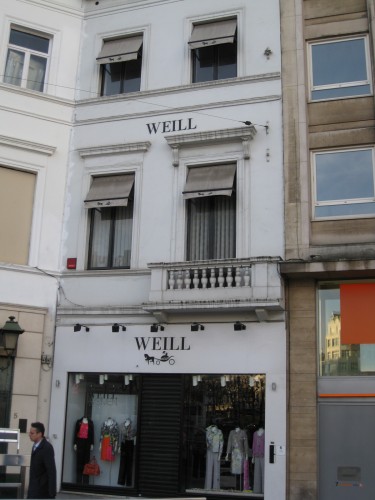
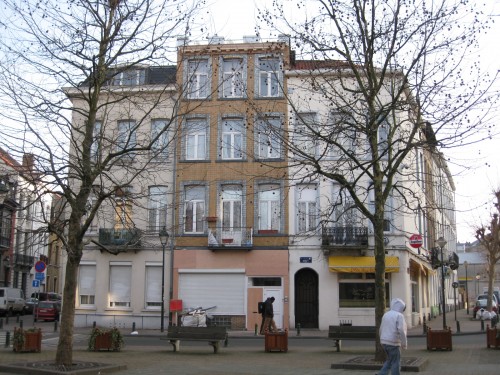
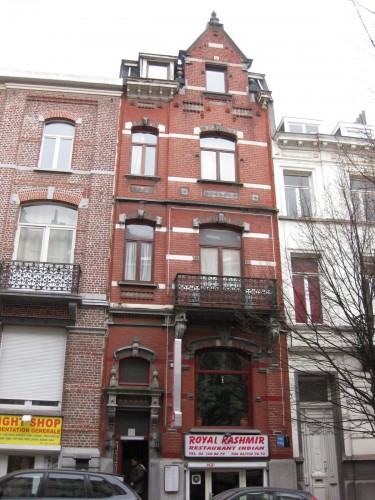
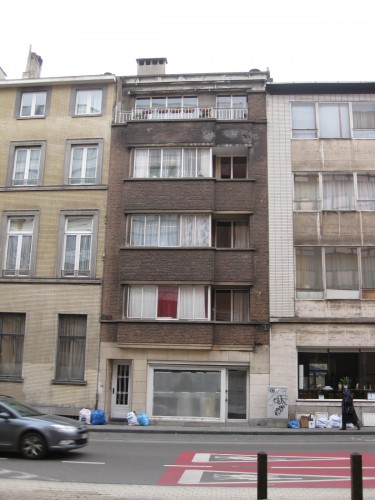

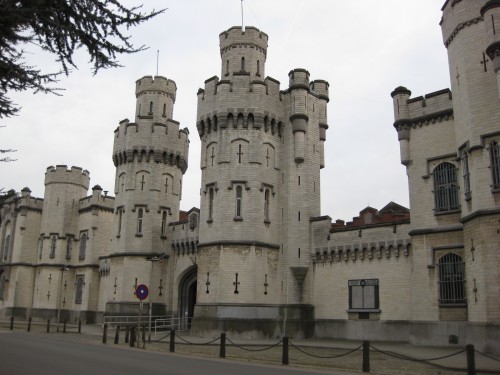
Leave a reply